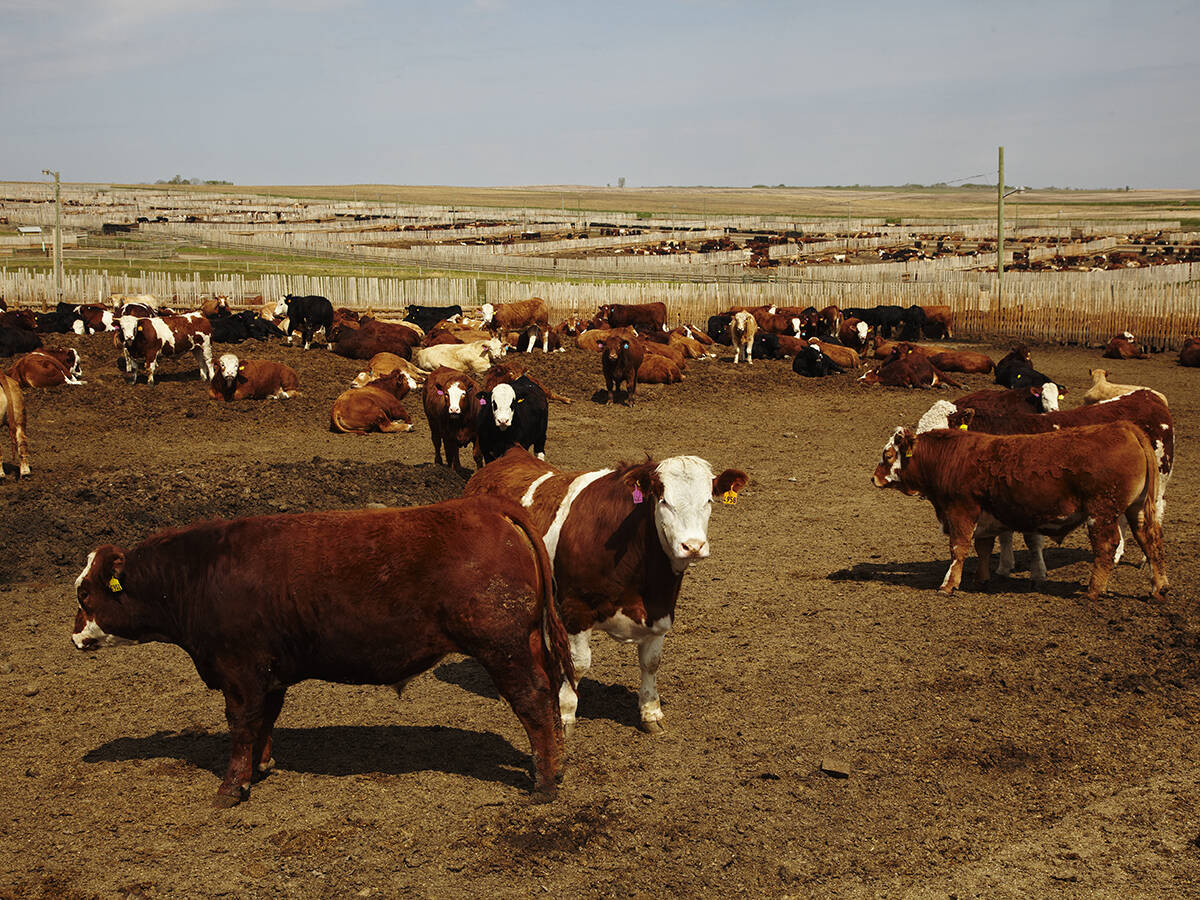This cattle market information is selected from the weekly report from Canfax, a division of the Canadian Cattlemen’s Association. More market information, analysis and statistics are available by becoming a Canfax subscriber by calling 403-275-5110 or at www.canfax.ca.
Fed prices rally
Fed cattle prices have rallied $10 per hundredweight over the past seven weeks, moving from the low $160s to the low $170s per cwt.
Though Canadian fed prices have strengthened, on a cash-to-cash basis Alberta and Ontario prices are still at a discount to the U.S. market. Year to date, Alberta fed prices have been trading at a $15.03 per cwt. discount to the Nebraska market, the weakest since 2014. Year to date, Ontario fed prices have been at a $4.21 per cwt. discount against the Nebraska market compared to $1.20 per cwt. discount last year.
Read Also

Canfax cattle market report – November 13, 2025
The Canfax cattle market report for November 13, 2025. Fed & feeder cattle prices, butcher cow trends, and cutout market insights.
Over the past two months packers limited the number of cash cattle they were buying from each producer. Now they are buying larger numbers, which should help feedlot inventories get more current.
Alberta dressed sales were reported from $288-$290 per cwt. delivered. Cattle that traded last week were scheduled for delivery the week of June 6 and 13. Alberta fed cash-to-futures basis levels are the strongest since October. Despite historically high feedgrain prices, cattle continue to come in bigger than expected. Western Canadian steer carcass weights are 36 pounds heavier than last year, and heifer weights are one lb. larger.
In Ontario dressed sales were reported from $300-$302 per cwt., steady to $1 higher than last week.
In the U.S., dressed sales in Iowa and Nebraska ranged from US$227-$230 per cwt., $3-$4 per cwt. lower than the previous week. Live sales in Nebraska were at $144, $2 per cwt lower. Sales in Texas and Kansas ranged from $138-$140 per cwt.
Beef stocks down
Statistics Canada released its yearly frozen and chilled meat report showing beef stocks are down 13 percent compared to April 1, 2021. The decrease may be due to stronger exports, which were up 10 percent in the first quarter.
Slaughter cows ample
Ample non-fed offerings were reported last week with slaughter cows trading generally steady with the previous week. D2 and D3 slaughter cows averaged $106.69 and $93.50 per cwt., respectively, and prices were around $9.50 per cwt. higher than a year ago. Dressed cow bids aligned $5 per cwt. lower than the previous week to $200-$205 delivered.
Butcher bull prices slipped almost $4 per cwt. lower than the previous week to average $121.63 per cwt. Alberta slaughter cows have recently traded at a premium to the United States and at the strongest level since summer 2017. Non-fed prices typically build seasonal price momentum through May and into June, but over the past month slaughter cow prices have trended sideways and appear to have peaked early. Pent up grilling demand is anticipated for this summer, and slaughter cow prices should be well supported.
Good feeder demand
Alberta feeder prices saw good demand last week with steer prices steady. Heifer prices aligned higher as the offering of quality steers continues to tighten. Last week’s 800 lb. steer-heifer price spread was the narrowest this year at $12.58 per cwt.
Alberta steer prices were at a discount to Ontario, while Alberta heifers traded at a slight premium. Large calves from 600-800 lb. traded stronger on late season grass interest with steer prices steady to $1 per cwt. higher. Heifers rallied $2.50-$4 per cwt. higher. Yearlings heavier than 800 lb. traded similar with steers, trending sideways, and heifers surged more than $3 per cwt. higher.
Auction volumes eased 28 percent lower than the previous week to 19,911 head but were 27 percent larger than the same week last year. Planting season has likely distracted some producers from the cattle market. Year to date, auction volumes are one percent larger than a year ago at 492,563 head. Feeder exports to the U.S. for the week ending April 30 eased 17 percent lower than the previous week to 4,241 head, and year-to-date volumes continue larger than a year ago at 99,991 head. Late season demand for grass cattle is now focusing on larger weight feeders.
U.S. cutouts soften
In U.S. beef trade, cutouts have been soft since mid-April. Cold spring weather and ample supplies appear to have delayed the spring rally. The Choice cutout ended the week US$2.02 per cwt. higher at $257.20 per cwt., and Select averaged $244.36.














